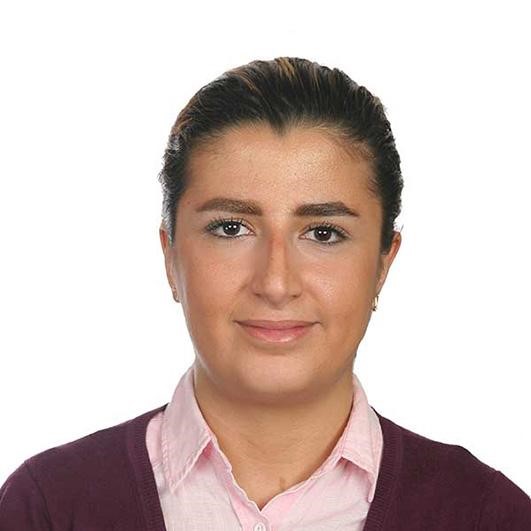AUCTORES
Globalize your Research
Research Article | DOI: https://doi.org/10.31579/2641-0419/237
1 Department of Foundational Science and Research, ECU, Greenville, NC, USA
2 Department of Obstetrics and Gynecology, ECU, Greenville, NC, USA
3 Department of Kinesiology, ECU, Greenville, NC, USA
4 Department of Human Development and Family Sciences, Greenville, NC, USA
5 Department of Pediatrics, ECU, Greenville, NC, USA
6 School of Kinesiology and Recreation, Illinois State University, Normal, IL, USA
7 School of Nursing, University of North Carolina at Chapel Hill, NC, USA
*Corresponding Author: Linda E May, MS, PhD, FAHA, FACSM 1851 Mac Gregor Downs Rd Greenville, NC 27834.
Citation: Linda E May, Brooke N Davis, Carol A Johnston, Lauren Sarno, Dennis Steed. et all (2022). Influence of Light Intensity exercise During Pregnancy on Fetal Echocardiographic and Maternal Cardiovascular Measures. J. Clinical Cardiology and Cardiovascular Interventions, 5(2); DOI:10.31579/2641-0419/237
Copyright: © 2022 Linda E May, This is an open-access article distributed under the terms of the Creative Commons Attribution License, which permits unrestricted use, distribution, and reproduction in any medium, provided the original author and source are credited.
Received: 06 December 2021 | Accepted: 13 December 2021 | Published: 10 January 2022
Keywords: pregnancy; light intensity exercise; maternal; fetal; echocardiography
Background: Although moderate intensity maternal exercise is recommended during pregnancy, most women do not achieve this level.
Objective: This study aimed to determine the effects of supervised maternal light-intensity exercise on fetal cardiovascular measures in the 3rd trimester.
Materials and Methods: We compared women participating in light-intensity (LI) stretching/breathing or no exercise (CON) across 24+ weeks of pregnancy Women with singleton pregnancies (<16 weeks), between 18-40 years, 18.5-34.99 kg/m2 BMI, and having no chronic health conditions were eligible. LI did 150 minutes light-intensity weekly exercise; CON did normal daily activities, but no exercise. Maternal measures included resting heart rate (HR) and blood pressure (BP). Fetal measures included estimated fetal weight (EFW), ponderal index (PI), HR, along with right and left ventricular measures (e.g., stroke volume, cardiac output, ejection fraction) at 36 weeks’ gestation. T-tests compared differences between groups; partial spearman rank correlations and regressions were performed to find relationships and predict fetal echocardiographic outcomes, controlling for fetal activity state.
Results: Of 50 pregnant women (n=26 in LI, n=24 in CON), we found maternal exercise intensity influences fetal left ventricular heart flow, while maternal exercise duration influences fetal right ventricular outcomes. There were no differences (p>0.05) in fetal cardiac anatomical measures. Lastly, light intensity exercise and duration of exercise lower maternal blood pressure in late pregnancy.
Conclusions:Light-intensity exercise is associated with improved fetal cardiac measures. Women benefit from light intensity exercise during pregnancy. Cardiovascular benefits from exercise for mother and child are dose dependent.
Although exercise at recommended levels of 150 minutes/week, moderate intensity during pregnancy demonstrates maternal and fetal benefits and decreased gestational conditions [1-7], more than half of pregnant women fail to meet the recommended levels of prenatal physical activity [8]. While research demonstrates maternal exercise has a dose response with fetal heart outcomes[9] and light intensity (LI) exercises is one way to decrease sedentary time, research shows this to be a preference for Hispanics, black, and obese pregnant women [10-12]. Light intensity exercises, such as walking, yoga, deep breathing with stretching, have supported benefits, like decreased incidence of pre-eclampsia [13, 14]. Furthermore, in the obese population, light intensity exercise decreases the occurrence of pre-eclampsia, whereas moderate-to-vigorous exercise has had mixed results[15]. Benefits of light intensity exercise are thought to be a result of improving parasympathetic control without stimulating the sympathetic nervous system [10, 14, 16]. In addition to improved maternal cardiac autonomic control, other benefits associated with light intensity exercise while pregnant include decreased perceived stress, increased maternal antioxidant levels, lower C-Reactive Protein levels, and improved pregnancy outcomes [17-20]. Light intensity walking is associated with improved glucose control in pregnant women with gestational diabetes[21]. Similar to moderate intensity exercise, light intensity prenatal yoga is associated with increased vaginal deliveries and pain tolerance while laboring [22]. Prenatal light intensity exercise typically has high adherence during pregnancy, especially in the obese population[15].
Little is known about potential effects of light intensity exercise during pregnancy on offspring outcomes; further, most research on birth outcomes is from moderate intensity maternal exercise, including one study that notes prenatal yoga is associated with attenuated low birth weight babies[22]. Interestingly, earlier research, using self-reported maternal exercise, has showed a dose response relationship between prenatal exercise and offspring heart outcomes [9, 23]. We are uncertain of the influence of light intensity exercise during pregnancy on fetal heart outcomes.
To address this gap in knowledge, the purpose of the current study was to find the effects of supervised prenatal light intensity exercise on maternal and fetal cardiovascular measures in the 3rd trimester of pregnancy. We hypothesized that light intensity exercise during pregnancy would show improved maternal resting heart measures and greater fetal cardiac function (i.e., increases in stroke volume and index, cardiac output and index, ejection fraction), but not anatomical changes (i.e., pulmonary and aortic valve diameters) at 36 weeks of gestation compared to fetuses of non-exercising women.
This study employed a secondary analysis of a randomized controlled exercise intervention trial at East Carolina University from 2015 to 2018. The aim of the secondary analysis was to find if there were differences between the light intensity stretching/breathing group and the no exercise group regarding maternal and fetal heart outcomes. All study protocols were approved by the East Carolina Institutional Review Board, and each participant signed an informed consent form prior to enrollment.
Pregnant women were recruited from local obstetric clinics in eastern North Carolina using brochures and email announcements. Women were eligible for this study if they 1) were <16>
Randomization for both studies was performed by the principal investigator using a random sequence generator (GraphPad, San Diego, CA) and allocation was concealed prior to group assignment. One sonographer completed all ultrasounds and fetal echocardiograms and was blinded to participant group assignment; however, participants and exercise trainers were not blinded to group assignment due to the nature of the study.
All participants underwent a submaximal exercise treadmill test as validated for pregnant women by Mottola et al. [25]. During the treadmill test, oxygen consumption and carbon dioxide production were assessed via breath-by-breath analysis (Parvo Medics, TrueOne 2400, Sandy, UT) until volitional fatigue in order to assess VO2peak (ml O2×kg-1×min-1). Maternal heart rate (HR) was measured continuously with a Polar FS2C HR monitor. This test was performed to calculate the target HR zones (THR). Target HRs for this study corresponded to maternal HRs obtained at 30-40% VO2peak, reflecting light intensity [26].
Regular meetings differed by group. The light intensity exercise group completed a 50-minute exercise session 3 times per week for ~24 weeks (16 weeks’ gestation until delivery). Each session began with a 5-minute warm-up consisting of slow walking on a treadmill. Following this, the women were guided, via a trained staff member, through several breathing and stretching exercises. To maintain low intensity (30-40% VO2peak), women were supervised by a trained staff member; maternal HR was monitored before, during, and after each training session using a Polar FS2C HR monitor (POLAR FS2c, Polar Electro Inc., Bethpage, NY). Exercise sessions were scheduled based on the participants’ individual availability. However, the control group did normal daily activity, but no exercise. The daily activity and no exercise for the control group was verified by completion of the modifiable physical activity questionnaire (MPAQ) [27-30], validated for pregnant women, provided at least twice during the pregnancy (enrollment, 36 weeks’ gestation). This questionnaire also provided participant demographic information (age, pre-pregnancy weight, number of pregnancies, number of live children, breastfeeding, highest degree obtained, race).[27, 28, 31] Results from the MPAQ after delivery was used to verify all participants’ activity levels respective of their assigned group [27, 32].
In person exercise and/or MPAQ data was used to calculate average pregnancy exercise duration (minutes) and exercise volume (MET∙min∙wk-1). Pregnancy MET∙min∙wk-1 were quantified (frequency X duration of session) then multiplied by the MET (metabolic equivalent) level of their assigned group, established by the Compendium for Physical Activity[33]. The total exercise duration (minutes) and volume (METmin) for all weeks were summed and averaged for the average pregnancy exercise duration (min/wk) and volume (MET∙min∙wk-1) values. Exercise session attendance was also tracked, via an electronic record and calculated by dividing the number of sessions attended by the total number of possible sessions in the participant’s gestational period (16 weeks until delivery). Participants were considered “adherent” if their attendance was ≥ 80%.
Our fetal echocardiographic outcomes were measured by one sonographer blinded to group allocation. At 34-36 weeks’ gestation, an obstetrical ultrasound and fetal echocardiogram were performed between 12:00 and 1:00 pm at the university-affiliated outpatient clinic by a certified sonographer, blinded to group assignment, using a Logiq P5 ultrasound system (General Electric, Korea). These procedures are previously validated and found reliable in healthy, normal pregnancies producing accurate measurements of the fetal cardiac chamber dimensions and physiological measures of cardiac function.[34, 35] Obstetrical ultrasound and fetal echocardiogram were used to assess fetal anatomical and functional cardiac measures that included estimated fetal weight (EFW; grams), body length (cm), pulmonary valve diameter, and aortic valve diameter. Body length (cm) was calculated based on the standard formula 6.18+0.59Xfemur length (mm).[36] These outflow tract diameters were used to calculate outflow tract area (0.785*diameter2). The fetal echocardiogram was used to assess heart rate (beats∙min-1), stroke volume (mL∙beat-1), cardiac output (L∙min-1), pulmonary and aortic peak velocities (cm∙sec-1) and VTIs (velocity-time integral; cm). Stroke volume (SV) was also calculated using VTI*outflow tract area since this has been shown to have improved prognostic value over ejection fraction.[37, 38] Cardiac output was calculated by multiplying stroke volume and heart rate. Stroke volume and cardiac output were additionally adjusted for body size via body surface area (cm3) to calculate stroke index (mL∙(m2)-1) and cardiac index (L∙(m2)-1), respectively. Body surface area was calculated based on the Mostellar formula:[39]
0). The ratio of right to left cardiac output and indices were calculated by dividing the right ventricular value by the left ventricular measures. The combined cardiac output and cardiac indices were calculated by summing the right and left ventricular measures. The fetal activity state (FAS), quiet or active, was determined by direct observation of the fetus’ movement, heart rate, and heart rate pattern by the sonographer during the ultrasound recording [40-42].
Maternal weight and height were assessed at 16 weeks of gestation. Pre-pregnancy weight was obtained from screening questions. Weight and height were measured in pounds and inches, respectively, and subsequently converted to their appropriate metric units and used to calculate body mass index using the standard formula
.[43]
Maternal demographic and pregnancy-related characteristics including gravida, parity, pre-pregnancy weight and height were abstracted from pre-screening eligibility questionnaires and verified with electronic health records; presence or absence of gestational diabetes mellitus (GDM), hypertensive disorders of pregnancy (e.g. pre-eclampsia, gestational hypertension), intrauterine growth restriction (IUGR), placental previa or abruption, delivery mode (i.e. vaginal, cesarean), gestational age (weeks), and Apgar scores at 1 and 5 minutes were recorded from electronic health records[44]. Pre-pregnancy body mass index (BMI) was calculated by dividing participant pre-pregnancy weight by the product of height squared (kg/m2). Preterm birth was defined as births <37>
Maternal physical measurements such as blood pressure (BP) and heart rate (HR) were measured at 16 and 36 weeks’ gestation. Maternal resting blood pressure (BP) and heart rate (HR) were assessed in a sitting position. The BP was recorded using a manual sphygmomanometer at the brachial artery just proximal to the elbow (arm straight or in mild elbow flexion) with an appropriately sized cuff[45]. All measures were performed by trained research staff before each exercise session.
Between-group differences for maternal demographics, pregnancy-related and maternal factors, and fetal cardiac outcomes were found using two-tailed independent t-tests if data were normally distributed or Mann-Whitney U tests for non-normally distributed data. Spearman’s rank correlation tests were also used to assess correlations between maternal exercise, expressed as a continuous variable (MET∙min∙week-1) and fetal cardiac outcomes; this analysis was stratified by fetal activity state (FAS). Linear regression analysis was performed to assess predictors of fetal heart measures. All models used a stepwise process, in which variables were eliminated until the best model was achieved. In order to find predictors of fetal heart function, we used 3 models: Model 1 controlled for fitness level (Peak VO2), 36 wk mHR, exercise volume (METmin/wk), FAS, and gravida; Model 2 controlled for fitness level (Peak VO2), 36 wk mSBP, exercise volume (METmin/wk), FAS, and gravida. In order to assess which component of exercise volume (frequency, intensity, duration) is the strongest predictor of fetal heart outcomes, we used Models 3, 4, and 5. Model 3 controlled for fitness level (peak VO2), pre-pregnancy BMI, exercise frequency, exercise intensity, exercise duration, and FAS. Model 4 controlled for fitness level (peak VO2), maternal HR, exercise frequency, exercise intensity, exercise duration, FAS, and gravida. Model 5 controlled for fitness level (peak VO2), maternal HR, exercise frequency, exercise intensity, exercise duration, FAS, and gender. With alpha set at 0.05 and power of 80%, sample size calculations determined we would need 30 total participants (15 per group) in order to detect differences between groups in the primary outcome of fetal heart rate. Excluding between group differences in the quiet state, all analyses had sufficient power to detect group differences.
The analytical sample consisted of a convenience sample of 50 women, 26 in the light intensity exercise group and 24 in the control group that did not exercise. The average participant was 30 years old, overweight (BMI 26.1±5.78), unfit (resting HR= 95 bpm and 21.7 mL/min VO2 peak), and pregnant with her second child.
Maternal descriptors (e.g., pre-pregnancy BMI, 16- and 36-week blood pressure) were similar between groups (Table 1). There were no differences in fitness level between groups at enrollment based on resting HR and relative oxygen consumption (Table 1). However, a Mann-Whitney U test revealed a significant between-group difference for maternal exercise intensity, duration, and volume (Table 1). There were no differences between groups regarding pregnancy outcomes (Table 1). Infant characteristics at birth were similar, except the light intensity group had babies about 400 grams lighter than non-exercising controls (Table 1). We found no significant differences in fetal heart measures between groups (Table 2).
We found a few notable correlations for maternal cardiovascular outcomes in late pregnancy related to exercise measures. Maternal exercise duration (min/wk) is (p=0.02) inversely but weakly (rho=-0.330) correlated to resting diastolic blood pressure at 36 weeks, and exercise duration has trends (p=0.06) of a weak negative association (-0.272) with 36 wk SBP. Exercise Intensity (METs) was moderately (rho=0.419) correlated with 36 wk resting HR (p=0.003). No other correlations were
significant for maternal heart measures with maternal exercise measures.
We wanted to determine fetal echocardiographic changes within fetal activity state. When controlling for fetal activity state (FAS), 3 recordings did not have data available, thus leaving 47 recordings analyzed. Stratified by fetal activity state (active and quiet), there were no between-group differences in fetal heart measures (Table 3).
Controlling for FAS, significant correlations were found between maternal measures of fitness (peak VO2, 36 wk mHR) with fetal echocardiographic measures. In the quiet state, maternal fitness level (peak VO2) is inversely associated with pulmonary valve peak velocity (rho=-0.559, 0.047). Also in the quiet state, maternal resting HR at 36 weeks is correlated with fetal LV stroke index (rho=0.581, 0.047), LV cardiac index (rho=0.620, 0.03), pulmonary valve peak velocity (rho=0.692, 0.01), pulmonary valve flow velocity (0.606, 0.02), and combined cardiac index (rho=0.640, 0.03). In the active state, maternal fitness level was moderately associated with fetal LV stroke volume (rho=0.458, 0.01) and aortic valve area (rho=0.447, 0.01). In the active state, maternal resting HR at 36 weeks is negatively correlated with LV stroke index (rho=-0.379, 0.04)
We found many significant predictors for fetal heart function outcomes. For example, fetal RV cardiac output is predicted by FAS, as well as exercise volume; this significance is primarily driven by exercise duration (Table 4). Interestingly, gender predicts fetal RV ejection fraction (Table 4). Lastly, maternal exercise intensity predicts aortic valve flow velocity (Table 4). Thus, duration of maternal exercise is a predictor of right ventricular fetal heart function while intensity influences left ventricular blood flow velocity.
We hypothesized that light intensity exercise during pregnancy would result in improved maternal resting heart measures and greater fetal cardiac function (i.e., increases in stroke volume and index, cardiac output and index, ejection fraction) but not fetal anatomical heart changes (i.e., pulmonary and aortic valve diameters) at 36 weeks of gestation compared to fetuses of non-exercising women. Our main finding shows that 1) maternal exercise intensity influences fetal left ventricular heart flow while 2) exercise duration influences fetal right ventricular outcomes. As hypothesized, there were no differences in fetal cardiac anatomical measures. Lastly, light intensity exercise and duration of exercise are important for maternal cardiovascular benefits during pregnancy.
In support of our hypothesis, we found light intensity exercise influences fetal left ventricular outflow. These findings align with earlier research that shows a dose–response relationship between maternal exercise intensity and offspring cardiac adaptations [9, 23, 46, 47]. Though the differences compared to controls in fetal flow velocities were not as large in this analysis, the findings are similar to the significant left ventricular flow velocity observed in fetuses exposed to moderate intensity aerobic exercise [1]. Importantly, left ventricular outflow measures are thought to contribute to the atherosclerotic environment [48] and are a better predictor of adverse cardiovascular outcomes than left ventricular ejection fraction [38]. Although the changes are smaller; they demonstrate potentially decreased risk of adverse cardiovascular outcomes for the fetus due to maternal light intensity exercise. The smaller differences from maternal light intensity may be explained, in part, by higher intensities stimulating changes in both sympathetic and parasympathetic cardiac activity while low intensities lead to cardiac changes predominantly due to withdrawal of parasympathetic activity. Since the fetal cardiac ANS is developing, the difference in outcomes from exercise intensity may indicate different physiological responses needed to activate and mature these two autonomic nervous system branches [49, 50]. Interestingly, exercise during pregnancy increases serum and placenta superoxide dismutase (SOD), which breaks down free radicals and can regulate genes, DNA methylation, and cell functions [51]. Since exercise of any intensity or duration is associated with increased SOD in the aorta [51], this placental response may explain some of the changes associated with light intensity maternal exercise on fetal left ventricular function.
Exercise duration influenced fetal right ventricular outcomes. Comparable to differences in fetal heart measures due to supervised, moderate intensity maternal exercise[1], light intensity exercise at the recommended duration of 150 minutes each week influenced fetal right ventricular heart outcomes. Potentially due to the lower energy expenditure associated with lower intensity, a longer duration of lower intensity may elicit a similar response as the 150 minutes of moderate intensity exercise[21]. When total energy is held constant, longer sessions of moderate intensity exercise has similar cardioprotective benefits as shorter bouts of vigorous intensity exercise.[52] Similarly when energy expenditure is constant, light intensity exercise of longer duration improved insulin and plasma lipids more than shorter sessions of moderate-to-vigorous exercise in sedentary non-gravid adults.[53] Others have shown exercise duration associated with bioavailability of endothelial nitric oxide and vascular collateralization [54-56]. This effect may influence the placenta, which would then impact the fetal right heart as it is the primary heart pump in utero. Therefore, this outcome calls for further study.
Our study additionally shows that light intensity exercise and duration of exercise elicits changes coincident with improved maternal cardiovascular function (e.g., maternal blood pressure). An echocardiographic study comparing light-moderate exercise to no exercise found no significant differences but did reveal trends of lower resting BP and HR with slightly increased stroke volume and cardiac output at 34 weeks [57]. The current findings are similar to a study of overweight and normal weight women that demonstrated improved blood pressure and HRV due to light intensity walking throughout pregnancy [58]. Light intensity physical activity is associated with improved maternal diastolic blood pressure[20], submaximal aerobic capacity [59], decreased blood pressure and catecholamines [60], increased antioxidants (superoxide dismutase, transferrin) [18], and decreased cardiometabolic risk [61], such as improved blood lipids, glucose and insulin levels, C-peptide levels, C-reactive protein (CRP), decreased intima-media thickness, restored diastolic function and cardiac synchrony, as well as improved waist circumference and body composition without weight loss in adults [62-67]. Additionally, in rats, light intensity exercise has been shown to increase action potential amplitude, a determinant of actional potential velocity across myocardium more than moderate intensity and controls [68]. It is possible that stretching and light intensity exercise while pregnant enhance maternal cardiac autonomic control, which may reduce the risks for certain conditions, such as preeclampsia/gestational hypertension, gestational diabetes [14, 17, 69]. Light intensity exercise in resistant hypertensive adults has been shown to have BP benefits after one session and benefits persist longer after the session than moderate intensity exercise [67]. Similar to our findings, light intensity stretching during pregnancy was not associated with adverse pregnancy outcomes; further, studies have found a dose-response relationship for the duration of the light intensity exercise and decreased adverse outcomes [69] and CRP [20, 70]. Meta-analyses have noted exercise intensity, duration, and volume are associated with reduced risk of pregnancy complications [71]. In non-pregnant populations, duration of light intensity exercise is positively related to cardiometabolic improvements [72-74]. Additionally, the potentially increased adherence to and preference of light intensity exercise during pregnancy, especially in specific populations (e.g., Hispanic, Black, obese, hypertensive, multifetal gestation), makes this exercise a potential therapeutic alternative for improving maternal outcomes and warrants further investigation [11, 12].
The strengths of this study include the focus on women performing light intensity exercise during pregnancy. To the best of our knowledge, this was the first analysis that examined the effects of supervised light intensity exercise during pregnancy on specific fetal cardiac function measures. We controlled for time of day of the fetal recording and fetal activity state; additionally, all women were instructed to eat a snack 1 to 1.5 hours prior to the recording. There were also several limitations and methodological biases to this study. First, our light intensity exercise was an exercise dose less than the recommendations for pregnant women; thus, due to the lower MET and energy expenditure associated with lower intensity, the light intensity exercise protocol most likely should have been of longer duration[21], warranting further study. Secondly, although our sample size for per protocol analysis was small, we had sufficient power to test our hypothesis. Similarly, there was sufficient data in the fetal active state to test the hypothesis. Next, because we did not account for potential differences in maternal nutrition, it is possible that there are dietary differences, which may have contributed to differences in fetal heart development. For example, docosahexaenoic acid (DHA), which is an essential fatty acid for fetal nervous system development, could account for some differences. Lastly, there is a lack of longitudinal measures to find if changes are measurable after birth, and further research is needed after birth to determine if dose response changes in the offspring heart development persist.
The current study has interesting and new findings for this area of research. We found that maternal light intensity exercise and its duration improve fetal heart outcomes. Furthermore, light intensity exercise also has beneficial changes on maternal heart measures. Therefore, light intensity exercise benefits both mother and fetus and may be more tolerated in specific populations.
The authors declare that the research was conducted in the absence of any commercial or financial relationships that could be construed as a potential conflict of interest.
EN and CI provided oversight for all participants in the study. DS completed all fetal echocardiographic recordings. LS and RDS oversaw the echocardiographic interpretation of the recordings. CJ and SM completed the statistical analysis. BD and SM drafted the manuscript. SY and DK provided oversight on data interpretation and manuscript revisions. LM is the lead author who designed and oversaw all aspects of the study, data collection, data interpretation, and writing. All authors contributed to this work.
Supported, in part, by the American Heart Association (AHA grant #15GRNT24470029) and by East Carolina University internal funds.
We thank the women who participated in this study and who gave their time and effort.
Clearly Auctoresonline and particularly Psychology and Mental Health Care Journal is dedicated to improving health care services for individuals and populations. The editorial boards' ability to efficiently recognize and share the global importance of health literacy with a variety of stakeholders. Auctoresonline publishing platform can be used to facilitate of optimal client-based services and should be added to health care professionals' repertoire of evidence-based health care resources.

Journal of Clinical Cardiology and Cardiovascular Intervention The submission and review process was adequate. However I think that the publication total value should have been enlightened in early fases. Thank you for all.

Journal of Women Health Care and Issues By the present mail, I want to say thank to you and tour colleagues for facilitating my published article. Specially thank you for the peer review process, support from the editorial office. I appreciate positively the quality of your journal.
Journal of Clinical Research and Reports I would be very delighted to submit my testimonial regarding the reviewer board and the editorial office. The reviewer board were accurate and helpful regarding any modifications for my manuscript. And the editorial office were very helpful and supportive in contacting and monitoring with any update and offering help. It was my pleasure to contribute with your promising Journal and I am looking forward for more collaboration.

We would like to thank the Journal of Thoracic Disease and Cardiothoracic Surgery because of the services they provided us for our articles. The peer-review process was done in a very excellent time manner, and the opinions of the reviewers helped us to improve our manuscript further. The editorial office had an outstanding correspondence with us and guided us in many ways. During a hard time of the pandemic that is affecting every one of us tremendously, the editorial office helped us make everything easier for publishing scientific work. Hope for a more scientific relationship with your Journal.

The peer-review process which consisted high quality queries on the paper. I did answer six reviewers’ questions and comments before the paper was accepted. The support from the editorial office is excellent.

Journal of Neuroscience and Neurological Surgery. I had the experience of publishing a research article recently. The whole process was simple from submission to publication. The reviewers made specific and valuable recommendations and corrections that improved the quality of my publication. I strongly recommend this Journal.

Dr. Katarzyna Byczkowska My testimonial covering: "The peer review process is quick and effective. The support from the editorial office is very professional and friendly. Quality of the Clinical Cardiology and Cardiovascular Interventions is scientific and publishes ground-breaking research on cardiology that is useful for other professionals in the field.

Thank you most sincerely, with regard to the support you have given in relation to the reviewing process and the processing of my article entitled "Large Cell Neuroendocrine Carcinoma of The Prostate Gland: A Review and Update" for publication in your esteemed Journal, Journal of Cancer Research and Cellular Therapeutics". The editorial team has been very supportive.

Testimony of Journal of Clinical Otorhinolaryngology: work with your Reviews has been a educational and constructive experience. The editorial office were very helpful and supportive. It was a pleasure to contribute to your Journal.

Dr. Bernard Terkimbi Utoo, I am happy to publish my scientific work in Journal of Women Health Care and Issues (JWHCI). The manuscript submission was seamless and peer review process was top notch. I was amazed that 4 reviewers worked on the manuscript which made it a highly technical, standard and excellent quality paper. I appreciate the format and consideration for the APC as well as the speed of publication. It is my pleasure to continue with this scientific relationship with the esteem JWHCI.

This is an acknowledgment for peer reviewers, editorial board of Journal of Clinical Research and Reports. They show a lot of consideration for us as publishers for our research article “Evaluation of the different factors associated with side effects of COVID-19 vaccination on medical students, Mutah university, Al-Karak, Jordan”, in a very professional and easy way. This journal is one of outstanding medical journal.
Dear Hao Jiang, to Journal of Nutrition and Food Processing We greatly appreciate the efficient, professional and rapid processing of our paper by your team. If there is anything else we should do, please do not hesitate to let us know. On behalf of my co-authors, we would like to express our great appreciation to editor and reviewers.

As an author who has recently published in the journal "Brain and Neurological Disorders". I am delighted to provide a testimonial on the peer review process, editorial office support, and the overall quality of the journal. The peer review process at Brain and Neurological Disorders is rigorous and meticulous, ensuring that only high-quality, evidence-based research is published. The reviewers are experts in their fields, and their comments and suggestions were constructive and helped improve the quality of my manuscript. The review process was timely and efficient, with clear communication from the editorial office at each stage. The support from the editorial office was exceptional throughout the entire process. The editorial staff was responsive, professional, and always willing to help. They provided valuable guidance on formatting, structure, and ethical considerations, making the submission process seamless. Moreover, they kept me informed about the status of my manuscript and provided timely updates, which made the process less stressful. The journal Brain and Neurological Disorders is of the highest quality, with a strong focus on publishing cutting-edge research in the field of neurology. The articles published in this journal are well-researched, rigorously peer-reviewed, and written by experts in the field. The journal maintains high standards, ensuring that readers are provided with the most up-to-date and reliable information on brain and neurological disorders. In conclusion, I had a wonderful experience publishing in Brain and Neurological Disorders. The peer review process was thorough, the editorial office provided exceptional support, and the journal's quality is second to none. I would highly recommend this journal to any researcher working in the field of neurology and brain disorders.

Dear Agrippa Hilda, Journal of Neuroscience and Neurological Surgery, Editorial Coordinator, I trust this message finds you well. I want to extend my appreciation for considering my article for publication in your esteemed journal. I am pleased to provide a testimonial regarding the peer review process and the support received from your editorial office. The peer review process for my paper was carried out in a highly professional and thorough manner. The feedback and comments provided by the authors were constructive and very useful in improving the quality of the manuscript. This rigorous assessment process undoubtedly contributes to the high standards maintained by your journal.

International Journal of Clinical Case Reports and Reviews. I strongly recommend to consider submitting your work to this high-quality journal. The support and availability of the Editorial staff is outstanding and the review process was both efficient and rigorous.

Thank you very much for publishing my Research Article titled “Comparing Treatment Outcome Of Allergic Rhinitis Patients After Using Fluticasone Nasal Spray And Nasal Douching" in the Journal of Clinical Otorhinolaryngology. As Medical Professionals we are immensely benefited from study of various informative Articles and Papers published in this high quality Journal. I look forward to enriching my knowledge by regular study of the Journal and contribute my future work in the field of ENT through the Journal for use by the medical fraternity. The support from the Editorial office was excellent and very prompt. I also welcome the comments received from the readers of my Research Article.

Dear Erica Kelsey, Editorial Coordinator of Cancer Research and Cellular Therapeutics Our team is very satisfied with the processing of our paper by your journal. That was fast, efficient, rigorous, but without unnecessary complications. We appreciated the very short time between the submission of the paper and its publication on line on your site.

I am very glad to say that the peer review process is very successful and fast and support from the Editorial Office. Therefore, I would like to continue our scientific relationship for a long time. And I especially thank you for your kindly attention towards my article. Have a good day!

"We recently published an article entitled “Influence of beta-Cyclodextrins upon the Degradation of Carbofuran Derivatives under Alkaline Conditions" in the Journal of “Pesticides and Biofertilizers” to show that the cyclodextrins protect the carbamates increasing their half-life time in the presence of basic conditions This will be very helpful to understand carbofuran behaviour in the analytical, agro-environmental and food areas. We greatly appreciated the interaction with the editor and the editorial team; we were particularly well accompanied during the course of the revision process, since all various steps towards publication were short and without delay".

I would like to express my gratitude towards you process of article review and submission. I found this to be very fair and expedient. Your follow up has been excellent. I have many publications in national and international journal and your process has been one of the best so far. Keep up the great work.

We are grateful for this opportunity to provide a glowing recommendation to the Journal of Psychiatry and Psychotherapy. We found that the editorial team were very supportive, helpful, kept us abreast of timelines and over all very professional in nature. The peer review process was rigorous, efficient and constructive that really enhanced our article submission. The experience with this journal remains one of our best ever and we look forward to providing future submissions in the near future.

I am very pleased to serve as EBM of the journal, I hope many years of my experience in stem cells can help the journal from one way or another. As we know, stem cells hold great potential for regenerative medicine, which are mostly used to promote the repair response of diseased, dysfunctional or injured tissue using stem cells or their derivatives. I think Stem Cell Research and Therapeutics International is a great platform to publish and share the understanding towards the biology and translational or clinical application of stem cells.

I would like to give my testimony in the support I have got by the peer review process and to support the editorial office where they were of asset to support young author like me to be encouraged to publish their work in your respected journal and globalize and share knowledge across the globe. I really give my great gratitude to your journal and the peer review including the editorial office.

I am delighted to publish our manuscript entitled "A Perspective on Cocaine Induced Stroke - Its Mechanisms and Management" in the Journal of Neuroscience and Neurological Surgery. The peer review process, support from the editorial office, and quality of the journal are excellent. The manuscripts published are of high quality and of excellent scientific value. I recommend this journal very much to colleagues.

Dr.Tania Muñoz, My experience as researcher and author of a review article in The Journal Clinical Cardiology and Interventions has been very enriching and stimulating. The editorial team is excellent, performs its work with absolute responsibility and delivery. They are proactive, dynamic and receptive to all proposals. Supporting at all times the vast universe of authors who choose them as an option for publication. The team of review specialists, members of the editorial board, are brilliant professionals, with remarkable performance in medical research and scientific methodology. Together they form a frontline team that consolidates the JCCI as a magnificent option for the publication and review of high-level medical articles and broad collective interest. I am honored to be able to share my review article and open to receive all your comments.

“The peer review process of JPMHC is quick and effective. Authors are benefited by good and professional reviewers with huge experience in the field of psychology and mental health. The support from the editorial office is very professional. People to contact to are friendly and happy to help and assist any query authors might have. Quality of the Journal is scientific and publishes ground-breaking research on mental health that is useful for other professionals in the field”.

Dear editorial department: On behalf of our team, I hereby certify the reliability and superiority of the International Journal of Clinical Case Reports and Reviews in the peer review process, editorial support, and journal quality. Firstly, the peer review process of the International Journal of Clinical Case Reports and Reviews is rigorous, fair, transparent, fast, and of high quality. The editorial department invites experts from relevant fields as anonymous reviewers to review all submitted manuscripts. These experts have rich academic backgrounds and experience, and can accurately evaluate the academic quality, originality, and suitability of manuscripts. The editorial department is committed to ensuring the rigor of the peer review process, while also making every effort to ensure a fast review cycle to meet the needs of authors and the academic community. Secondly, the editorial team of the International Journal of Clinical Case Reports and Reviews is composed of a group of senior scholars and professionals with rich experience and professional knowledge in related fields. The editorial department is committed to assisting authors in improving their manuscripts, ensuring their academic accuracy, clarity, and completeness. Editors actively collaborate with authors, providing useful suggestions and feedback to promote the improvement and development of the manuscript. We believe that the support of the editorial department is one of the key factors in ensuring the quality of the journal. Finally, the International Journal of Clinical Case Reports and Reviews is renowned for its high- quality articles and strict academic standards. The editorial department is committed to publishing innovative and academically valuable research results to promote the development and progress of related fields. The International Journal of Clinical Case Reports and Reviews is reasonably priced and ensures excellent service and quality ratio, allowing authors to obtain high-level academic publishing opportunities in an affordable manner. I hereby solemnly declare that the International Journal of Clinical Case Reports and Reviews has a high level of credibility and superiority in terms of peer review process, editorial support, reasonable fees, and journal quality. Sincerely, Rui Tao.

Clinical Cardiology and Cardiovascular Interventions I testity the covering of the peer review process, support from the editorial office, and quality of the journal.

Clinical Cardiology and Cardiovascular Interventions, we deeply appreciate the interest shown in our work and its publication. It has been a true pleasure to collaborate with you. The peer review process, as well as the support provided by the editorial office, have been exceptional, and the quality of the journal is very high, which was a determining factor in our decision to publish with you.
The peer reviewers process is quick and effective, the supports from editorial office is excellent, the quality of journal is high. I would like to collabroate with Internatioanl journal of Clinical Case Reports and Reviews journal clinically in the future time.

Clinical Cardiology and Cardiovascular Interventions, I would like to express my sincerest gratitude for the trust placed in our team for the publication in your journal. It has been a true pleasure to collaborate with you on this project. I am pleased to inform you that both the peer review process and the attention from the editorial coordination have been excellent. Your team has worked with dedication and professionalism to ensure that your publication meets the highest standards of quality. We are confident that this collaboration will result in mutual success, and we are eager to see the fruits of this shared effort.

Dear Dr. Jessica Magne, Editorial Coordinator 0f Clinical Cardiology and Cardiovascular Interventions, I hope this message finds you well. I want to express my utmost gratitude for your excellent work and for the dedication and speed in the publication process of my article titled "Navigating Innovation: Qualitative Insights on Using Technology for Health Education in Acute Coronary Syndrome Patients." I am very satisfied with the peer review process, the support from the editorial office, and the quality of the journal. I hope we can maintain our scientific relationship in the long term.
Dear Monica Gissare, - Editorial Coordinator of Nutrition and Food Processing. ¨My testimony with you is truly professional, with a positive response regarding the follow-up of the article and its review, you took into account my qualities and the importance of the topic¨.

Dear Dr. Jessica Magne, Editorial Coordinator 0f Clinical Cardiology and Cardiovascular Interventions, The review process for the article “The Handling of Anti-aggregants and Anticoagulants in the Oncologic Heart Patient Submitted to Surgery” was extremely rigorous and detailed. From the initial submission to the final acceptance, the editorial team at the “Journal of Clinical Cardiology and Cardiovascular Interventions” demonstrated a high level of professionalism and dedication. The reviewers provided constructive and detailed feedback, which was essential for improving the quality of our work. Communication was always clear and efficient, ensuring that all our questions were promptly addressed. The quality of the “Journal of Clinical Cardiology and Cardiovascular Interventions” is undeniable. It is a peer-reviewed, open-access publication dedicated exclusively to disseminating high-quality research in the field of clinical cardiology and cardiovascular interventions. The journal's impact factor is currently under evaluation, and it is indexed in reputable databases, which further reinforces its credibility and relevance in the scientific field. I highly recommend this journal to researchers looking for a reputable platform to publish their studies.

Dear Editorial Coordinator of the Journal of Nutrition and Food Processing! "I would like to thank the Journal of Nutrition and Food Processing for including and publishing my article. The peer review process was very quick, movement and precise. The Editorial Board has done an extremely conscientious job with much help, valuable comments and advices. I find the journal very valuable from a professional point of view, thank you very much for allowing me to be part of it and I would like to participate in the future!”

Dealing with The Journal of Neurology and Neurological Surgery was very smooth and comprehensive. The office staff took time to address my needs and the response from editors and the office was prompt and fair. I certainly hope to publish with this journal again.Their professionalism is apparent and more than satisfactory. Susan Weiner

My Testimonial Covering as fellowing: Lin-Show Chin. The peer reviewers process is quick and effective, the supports from editorial office is excellent, the quality of journal is high. I would like to collabroate with Internatioanl journal of Clinical Case Reports and Reviews.

My experience publishing in Psychology and Mental Health Care was exceptional. The peer review process was rigorous and constructive, with reviewers providing valuable insights that helped enhance the quality of our work. The editorial team was highly supportive and responsive, making the submission process smooth and efficient. The journal's commitment to high standards and academic rigor makes it a respected platform for quality research. I am grateful for the opportunity to publish in such a reputable journal.
My experience publishing in International Journal of Clinical Case Reports and Reviews was exceptional. I Come forth to Provide a Testimonial Covering the Peer Review Process and the editorial office for the Professional and Impartial Evaluation of the Manuscript.

I would like to offer my testimony in the support. I have received through the peer review process and support the editorial office where they are to support young authors like me, encourage them to publish their work in your esteemed journals, and globalize and share knowledge globally. I really appreciate your journal, peer review, and editorial office.
Dear Agrippa Hilda- Editorial Coordinator of Journal of Neuroscience and Neurological Surgery, "The peer review process was very quick and of high quality, which can also be seen in the articles in the journal. The collaboration with the editorial office was very good."

I would like to express my sincere gratitude for the support and efficiency provided by the editorial office throughout the publication process of my article, “Delayed Vulvar Metastases from Rectal Carcinoma: A Case Report.” I greatly appreciate the assistance and guidance I received from your team, which made the entire process smooth and efficient. The peer review process was thorough and constructive, contributing to the overall quality of the final article. I am very grateful for the high level of professionalism and commitment shown by the editorial staff, and I look forward to maintaining a long-term collaboration with the International Journal of Clinical Case Reports and Reviews.
To Dear Erin Aust, I would like to express my heartfelt appreciation for the opportunity to have my work published in this esteemed journal. The entire publication process was smooth and well-organized, and I am extremely satisfied with the final result. The Editorial Team demonstrated the utmost professionalism, providing prompt and insightful feedback throughout the review process. Their clear communication and constructive suggestions were invaluable in enhancing my manuscript, and their meticulous attention to detail and dedication to quality are truly commendable. Additionally, the support from the Editorial Office was exceptional. From the initial submission to the final publication, I was guided through every step of the process with great care and professionalism. The team's responsiveness and assistance made the entire experience both easy and stress-free. I am also deeply impressed by the quality and reputation of the journal. It is an honor to have my research featured in such a respected publication, and I am confident that it will make a meaningful contribution to the field.

"I am grateful for the opportunity of contributing to [International Journal of Clinical Case Reports and Reviews] and for the rigorous review process that enhances the quality of research published in your esteemed journal. I sincerely appreciate the time and effort of your team who have dedicatedly helped me in improvising changes and modifying my manuscript. The insightful comments and constructive feedback provided have been invaluable in refining and strengthening my work".

I thank the ‘Journal of Clinical Research and Reports’ for accepting this article for publication. This is a rigorously peer reviewed journal which is on all major global scientific data bases. I note the review process was prompt, thorough and professionally critical. It gave us an insight into a number of important scientific/statistical issues. The review prompted us to review the relevant literature again and look at the limitations of the study. The peer reviewers were open, clear in the instructions and the editorial team was very prompt in their communication. This journal certainly publishes quality research articles. I would recommend the journal for any future publications.

Dear Jessica Magne, with gratitude for the joint work. Fast process of receiving and processing the submitted scientific materials in “Clinical Cardiology and Cardiovascular Interventions”. High level of competence of the editors with clear and correct recommendations and ideas for enriching the article.

We found the peer review process quick and positive in its input. The support from the editorial officer has been very agile, always with the intention of improving the article and taking into account our subsequent corrections.

My article, titled 'No Way Out of the Smartphone Epidemic Without Considering the Insights of Brain Research,' has been republished in the International Journal of Clinical Case Reports and Reviews. The review process was seamless and professional, with the editors being both friendly and supportive. I am deeply grateful for their efforts.
To Dear Erin Aust – Editorial Coordinator of Journal of General Medicine and Clinical Practice! I declare that I am absolutely satisfied with your work carried out with great competence in following the manuscript during the various stages from its receipt, during the revision process to the final acceptance for publication. Thank Prof. Elvira Farina

Dear Jessica, and the super professional team of the ‘Clinical Cardiology and Cardiovascular Interventions’ I am sincerely grateful to the coordinated work of the journal team for the no problem with the submission of my manuscript: “Cardiometabolic Disorders in A Pregnant Woman with Severe Preeclampsia on the Background of Morbid Obesity (Case Report).” The review process by 5 experts was fast, and the comments were professional, which made it more specific and academic, and the process of publication and presentation of the article was excellent. I recommend that my colleagues publish articles in this journal, and I am interested in further scientific cooperation. Sincerely and best wishes, Dr. Oleg Golyanovskiy.

Dear Ashley Rosa, Editorial Coordinator of the journal - Psychology and Mental Health Care. " The process of obtaining publication of my article in the Psychology and Mental Health Journal was positive in all areas. The peer review process resulted in a number of valuable comments, the editorial process was collaborative and timely, and the quality of this journal has been quickly noticed, resulting in alternative journals contacting me to publish with them." Warm regards, Susan Anne Smith, PhD. Australian Breastfeeding Association.

Dear Jessica Magne, Editorial Coordinator, Clinical Cardiology and Cardiovascular Interventions, Auctores Publishing LLC. I appreciate the journal (JCCI) editorial office support, the entire team leads were always ready to help, not only on technical front but also on thorough process. Also, I should thank dear reviewers’ attention to detail and creative approach to teach me and bring new insights by their comments. Surely, more discussions and introduction of other hemodynamic devices would provide better prevention and management of shock states. Your efforts and dedication in presenting educational materials in this journal are commendable. Best wishes from, Farahnaz Fallahian.
Dear Maria Emerson, Editorial Coordinator, International Journal of Clinical Case Reports and Reviews, Auctores Publishing LLC. I am delighted to have published our manuscript, "Acute Colonic Pseudo-Obstruction (ACPO): A rare but serious complication following caesarean section." I want to thank the editorial team, especially Maria Emerson, for their prompt review of the manuscript, quick responses to queries, and overall support. Yours sincerely Dr. Victor Olagundoye.

Dear Ashley Rosa, Editorial Coordinator, International Journal of Clinical Case Reports and Reviews. Many thanks for publishing this manuscript after I lost confidence the editors were most helpful, more than other journals Best wishes from, Susan Anne Smith, PhD. Australian Breastfeeding Association.

Dear Agrippa Hilda, Editorial Coordinator, Journal of Neuroscience and Neurological Surgery. The entire process including article submission, review, revision, and publication was extremely easy. The journal editor was prompt and helpful, and the reviewers contributed to the quality of the paper. Thank you so much! Eric Nussbaum, MD
Dr Hala Al Shaikh This is to acknowledge that the peer review process for the article ’ A Novel Gnrh1 Gene Mutation in Four Omani Male Siblings, Presentation and Management ’ sent to the International Journal of Clinical Case Reports and Reviews was quick and smooth. The editorial office was prompt with easy communication.

Dear Erin Aust, Editorial Coordinator, Journal of General Medicine and Clinical Practice. We are pleased to share our experience with the “Journal of General Medicine and Clinical Practice”, following the successful publication of our article. The peer review process was thorough and constructive, helping to improve the clarity and quality of the manuscript. We are especially thankful to Ms. Erin Aust, the Editorial Coordinator, for her prompt communication and continuous support throughout the process. Her professionalism ensured a smooth and efficient publication experience. The journal upholds high editorial standards, and we highly recommend it to fellow researchers seeking a credible platform for their work. Best wishes By, Dr. Rakhi Mishra.

Dear Jessica Magne, Editorial Coordinator, Clinical Cardiology and Cardiovascular Interventions, Auctores Publishing LLC. The peer review process of the journal of Clinical Cardiology and Cardiovascular Interventions was excellent and fast, as was the support of the editorial office and the quality of the journal. Kind regards Walter F. Riesen Prof. Dr. Dr. h.c. Walter F. Riesen.

Dear Ashley Rosa, Editorial Coordinator, International Journal of Clinical Case Reports and Reviews, Auctores Publishing LLC. Thank you for publishing our article, Exploring Clozapine's Efficacy in Managing Aggression: A Multiple Single-Case Study in Forensic Psychiatry in the international journal of clinical case reports and reviews. We found the peer review process very professional and efficient. The comments were constructive, and the whole process was efficient. On behalf of the co-authors, I would like to thank you for publishing this article. With regards, Dr. Jelle R. Lettinga.

Dear Clarissa Eric, Editorial Coordinator, Journal of Clinical Case Reports and Studies, I would like to express my deep admiration for the exceptional professionalism demonstrated by your journal. I am thoroughly impressed by the speed of the editorial process, the substantive and insightful reviews, and the meticulous preparation of the manuscript for publication. Additionally, I greatly appreciate the courteous and immediate responses from your editorial office to all my inquiries. Best Regards, Dariusz Ziora

Dear Chrystine Mejia, Editorial Coordinator, Journal of Neurodegeneration and Neurorehabilitation, Auctores Publishing LLC, We would like to thank the editorial team for the smooth and high-quality communication leading up to the publication of our article in the Journal of Neurodegeneration and Neurorehabilitation. The reviewers have extensive knowledge in the field, and their relevant questions helped to add value to our publication. Kind regards, Dr. Ravi Shrivastava.

Dear Clarissa Eric, Editorial Coordinator, Journal of Clinical Case Reports and Studies, Auctores Publishing LLC, USA Office: +1-(302)-520-2644. I would like to express my sincere appreciation for the efficient and professional handling of my case report by the ‘Journal of Clinical Case Reports and Studies’. The peer review process was not only fast but also highly constructive—the reviewers’ comments were clear, relevant, and greatly helped me improve the quality and clarity of my manuscript. I also received excellent support from the editorial office throughout the process. Communication was smooth and timely, and I felt well guided at every stage, from submission to publication. The overall quality and rigor of the journal are truly commendable. I am pleased to have published my work with Journal of Clinical Case Reports and Studies, and I look forward to future opportunities for collaboration. Sincerely, Aline Tollet, UCLouvain.

Dear Ms. Mayra Duenas, Editorial Coordinator, International Journal of Clinical Case Reports and Reviews. “The International Journal of Clinical Case Reports and Reviews represented the “ideal house” to share with the research community a first experience with the use of the Simeox device for speech rehabilitation. High scientific reputation and attractive website communication were first determinants for the selection of this Journal, and the following submission process exceeded expectations: fast but highly professional peer review, great support by the editorial office, elegant graphic layout. Exactly what a dynamic research team - also composed by allied professionals - needs!" From, Chiara Beccaluva, PT - Italy.

Dear Maria Emerson, Editorial Coordinator, we have deeply appreciated the professionalism demonstrated by the International Journal of Clinical Case Reports and Reviews. The reviewers have extensive knowledge of our field and have been very efficient and fast in supporting the process. I am really looking forward to further collaboration. Thanks. Best regards, Dr. Claudio Ligresti
Dear Chrystine Mejia, Editorial Coordinator, Journal of Neurodegeneration and Neurorehabilitation. “The peer review process was efficient and constructive, and the editorial office provided excellent communication and support throughout. The journal ensures scientific rigor and high editorial standards, while also offering a smooth and timely publication process. We sincerely appreciate the work of the editorial team in facilitating the dissemination of innovative approaches such as the Bonori Method.” Best regards, Dr. Giselle Pentón-Rol.
